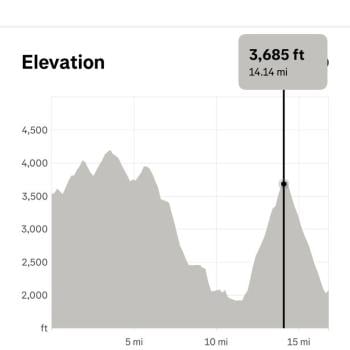On May 19, Richard Rohr examined the influence of experience in his morning meditation. Rohr introduces a concept where scripture and tradition represent the back wheels of faith, while experience serves as the front wheel driving it forward. This can be compared to the Wesleyan Quadrilateral, which integrates scripture, tradition, reason, and experience. The comparison highlights differences and similarities between ideas from the 17th Century and contemporary thought, exploring what can be learned from these perspectives.
For Wesley, experience was one of four interpretive lenses within the Quadrilateral, subordinate to Scripture. For Rohr, however, experience is the primary lens for understanding spirituality and guides the interpretation of Scripture and tradition. Examining both perspectives can provide a comprehensive understanding of the role of experience in spirituality. Comparing Wesley’s 18th-century mindset to Rohr’s 21st-century thinking offers a broad spectrum of insights that can inform our approach to faith.
Wesley’s Personal Engagement of Scripture
Wesley’s personal engagement with scripture emphasized a communal and reasoned approach, weaving individual experience into the larger tapestry of faith under the authority of scripture. This contrasts with Rohr’s more incarnational mysticism, which places significant emphasis on the lived moment as a sacred text in itself, shaping a dynamic interplay between personal insight and spiritual tradition.
For Wesley, and one of the reasons I am a Wesleyan is his belief in a formational reading of the Bible, where the text shapes the reader’s life and relationship with God, rather than being approached merely as an informational textbook. While I am a student of many of the World’s religions and their sacred texts, it the bible which rests as my final authority. If I cannot find the truth or parallels of the different traditions and texts I study, I don’t teach it from the pulpit.
For Wesley, he is noted in his sermon “Means of Grace” for offering these thoughts to the early Methodists:
“The Means of Grace,” as well as several other places, Wesley repeatedly told Methodists that “searching the Scriptures” was a means whereby God might convey to persons preventing, justifying, and sanctifying grace. Anyone who took love of God and love of neighbor seriously could not afford to ignore it. Searching the Scripture was seen as a work of piety, consisting of reading, meditating, hearing, and practicing. We have the makings of a syllogism and if it functions properly, if searching the scriptures is a means of grace, and reading, meditating, hearing, practicing are all a part of searching the scripture, ergo: reading is a means of grace; meditating is a means of grace; hearing is a means of grace; and, practicing is a means of grace.
Wesley is calling us to recognize the collective wisdom of the Christian traditions. He challenges us to approach the scripture with reverence and diligence, viewing it as a communal lens through with which the divine is revealed.
Rohr’s Incarnational Mysticism
Rohr on the other hand champions the immediacy of the sacred in everyday life, urging individuals to encounter God not only in ancient texts but also in the vividness of their own experiences. This dual emphasis on personal and communal dimensions enriches theological practice, cultivating a faith that is both grounded in historical insight and open to the unfolding realities of present-day spirituality.
Rohr calls his approach to experience “incarnational mysticism”. which emphasizes an experiential understanding of God as central to spirituality. For Rohr, mysticism is not merely an intellectual assent to beliefs or an adherence to belonging systems but rather an actual inner experience of the divine. The term “incarnational” highlights the Christian belief that God became embodied in Jesus Christ, underscoring the importance of the material world and personal, lived experience as pathways to knowing God. While I did not have the exact grasp of the language in my youth, nor was I aware of this concept when I was a young pastor, I did/do believe in a certain panentheism, or the notion of God in all things that when we are aware of this closeness of God, we find ourselves less alone and more connected to the divine.
In Rohr’s perspective, the personal and subjective experience is emphasized over Wesley’s larger tradition. Rohr’s critique of relying solely on external authority, such as Scripture and tradition, further indicates a different starting point for theological understanding, where personal experience assumes a more central role in validating or even informing those external sources.
Conclusion
While there are differences between Wesley and Rohr, both converge on the importance of balancing personal insight with broader spiritual foundations. Wesley’s Quadrilateral ensures scripture remains the anchor amid other interpretive lenses, whereas Rohr’s emphasis on incarnational mysticism invites a more dynamic integration of lived experience as a sacred text. Studied together, we can richen and deepen our faith experience and move deeper into the notion of owned faith. This process of faith development demonstrates the interplay between individual and communal understanding and underscores a shared need for discernment, safeguarding theology from extremes such as subjective bias in Wesley’s framework or the potential for uncritical individualism in Rohr’s perspective.













